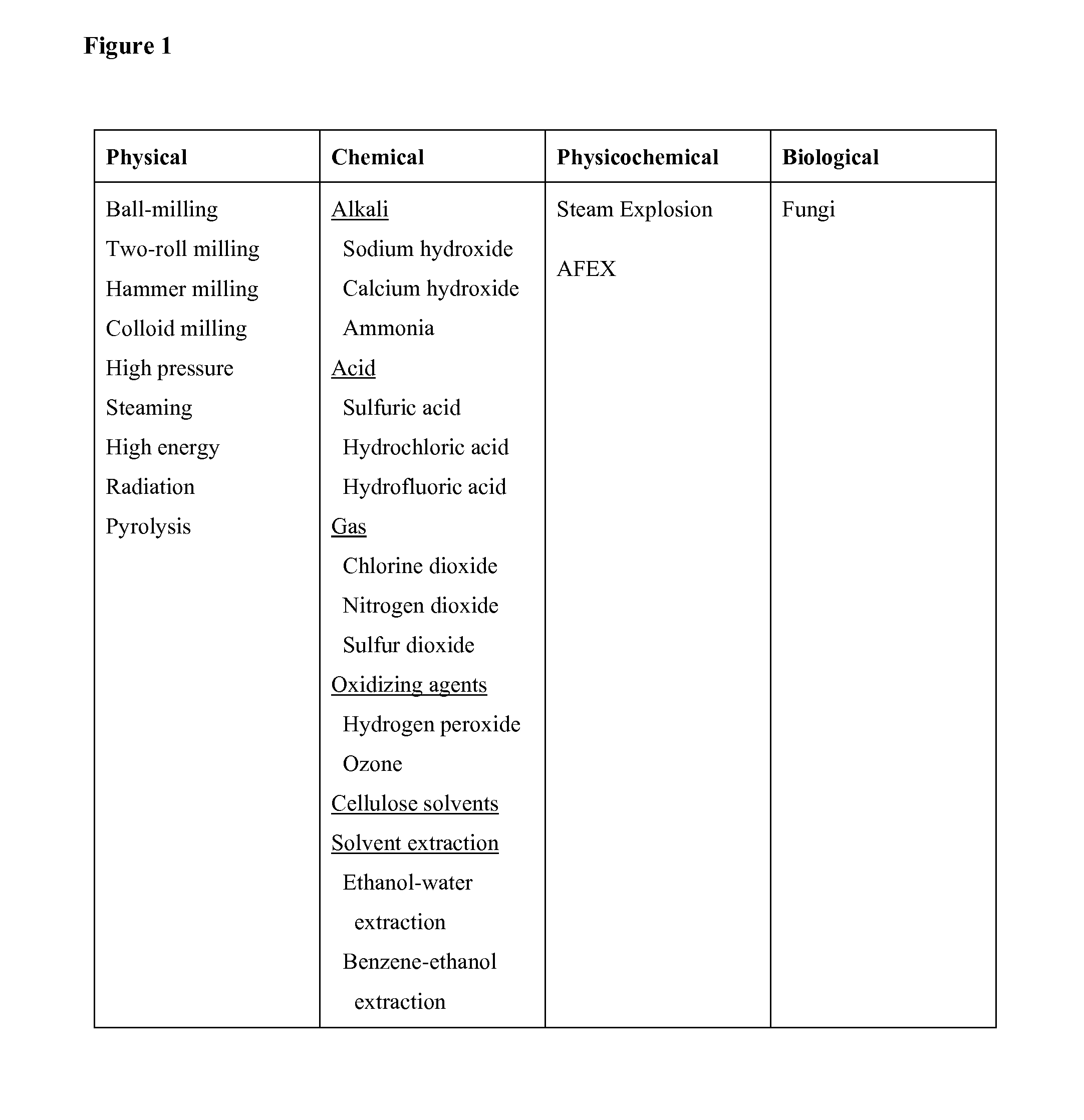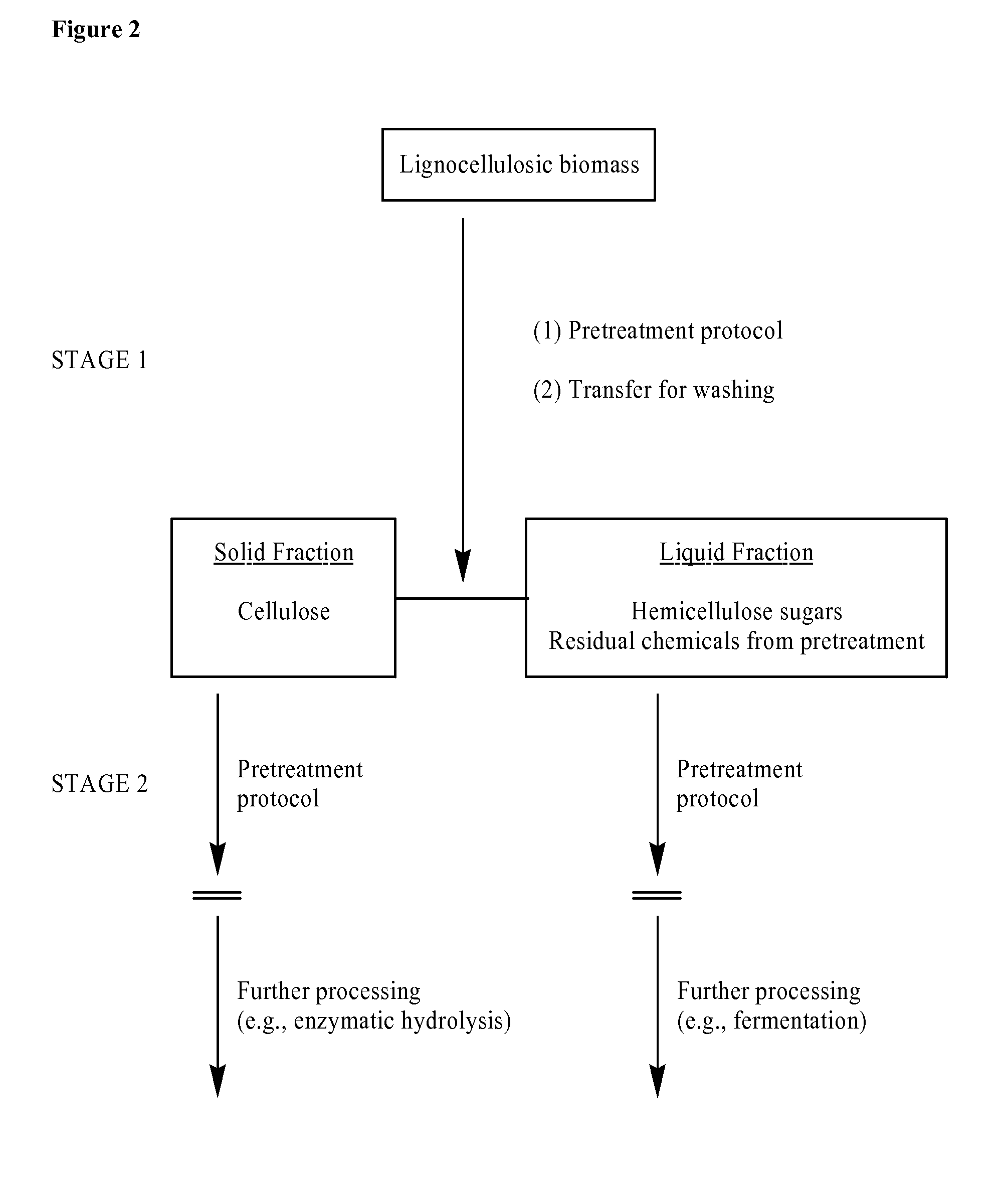Two-stage method for pretreatment of lignocellulosic biomass
- Summary
- Abstract
- Description
- Claims
- Application Information
AI Technical Summary
Benefits of technology
Problems solved by technology
Method used
Image
Examples
##ic example 1
Prophetic Example 1
MOD-1 (Modular Ethanol Production Plant)
[0159]This module targets high xylan (80%) and low glucan (20%) recovery. It uses low pressure steam (160 PSIG) pre-treatment catalyst, which bypasses solids feeding to high pressure constraint. The mild temperature also minimizes C5 sugar degradation products.
[0160]The module uses proven operating conditions and equipment. The operating temperature and pressure are similar to thermo-mechanical pulping. This minimizes technology risk and reduces fixed cost and fast-tracks deployment. Used equipment can be deployed, and no solids feeding development work required.
[0161]The module uses high enzyme (xylanase) loading. This minimizes cellulase dependence and reduces operating cost (because cellulase is costly). The short SSCF residence time reduces fixed cost because only smaller vessels sizes are required.
[0162]The output solid residue is sold for energy value. For example, the residue can be used as boiler fuel for co-located ...
##ic example 2
Prophetic Example 2
Technology Evolution (Clip on to Modular Ethanol Production Plant)
[0164]This module targets high glucan recovery. Here, high pressure steam (250 PSIG) is the pre-treatment catalyst. Pumping solids to high pressure (rather than feeding solids) reduces costs and minimizes degradation products (C5 sugars fermented in MOD-1). Alternatively, this module can use other pre-treatment catalysts like acid or ammonia (injected to zirconium pipe into which solids are pumped). MOD-1 pre-treatment / ethanol concentration may improve recovery of glucan.
[0165]This module is deployed by the time cellulase costs have come down. Down-stream CBP organisms will bypass purchased enzyme constraint.
PUM
| Property | Measurement | Unit |
|---|---|---|
| Temperature | aaaaa | aaaaa |
| Temperature | aaaaa | aaaaa |
| Temperature | aaaaa | aaaaa |
Abstract
Description
Claims
Application Information
 Login to View More
Login to View More - R&D
- Intellectual Property
- Life Sciences
- Materials
- Tech Scout
- Unparalleled Data Quality
- Higher Quality Content
- 60% Fewer Hallucinations
Browse by: Latest US Patents, China's latest patents, Technical Efficacy Thesaurus, Application Domain, Technology Topic, Popular Technical Reports.
© 2025 PatSnap. All rights reserved.Legal|Privacy policy|Modern Slavery Act Transparency Statement|Sitemap|About US| Contact US: help@patsnap.com



